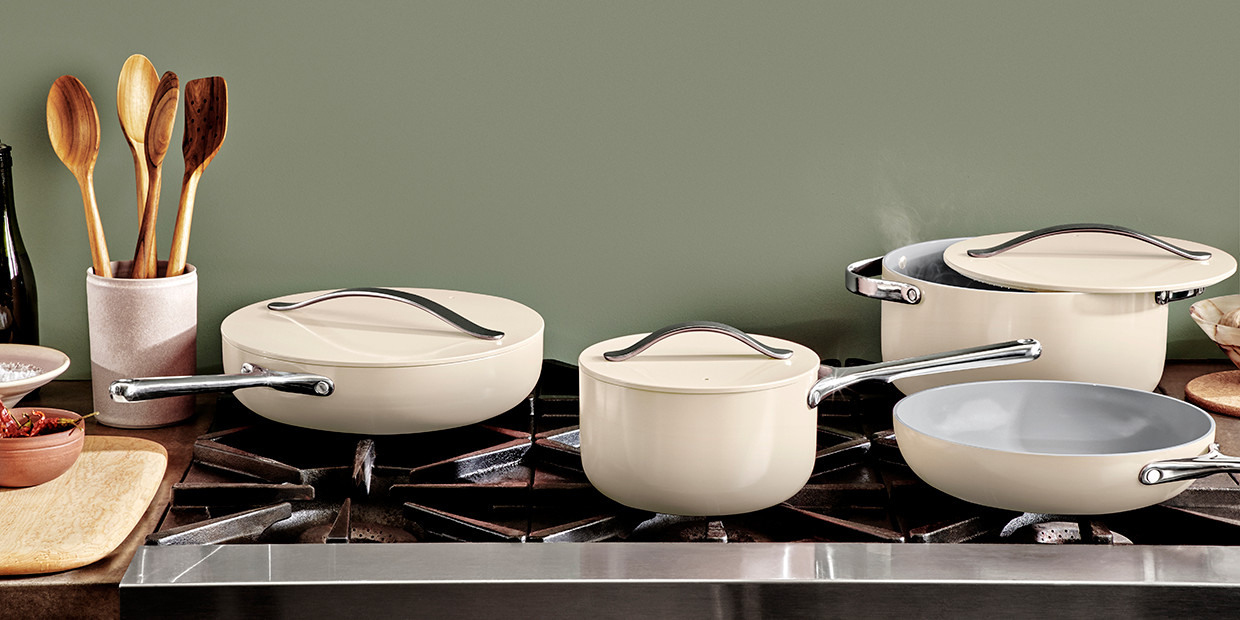As competition heats up, DTC cookware companies get creative

The direct-to-consumer cookware space is getting crowded. Brands are struggling to differentiate.
A few years ago, there were only a few digitally native startups selling items like pots and pans — and their branding was pretty straightforward. Companies like Misen and Field Company provided a similar story showcasing high-quality products at more affordable prices than legacy competition. Today, a bunch of new entrants have launched — Great Jones, Made In, Potluck, Brigade, Equal Parts, Sardel — all touting well-designed products made from various materials. They follow a similar industry arc to DTC mattresses: Casper, Purple, Nest, Saatva, Tuft & Needle. Or even the rush to swimwear, evidenced by Andie, Shein, Left on Friday and Summersalt. But as the cooking competition increases, messaging and brand story are becoming much more fine-tuned.
Take Milo, for example. It launched in 2018, selling only three products — a dutch oven, a smaller dutch oven and a skillet (that range between $65 and $95). Over the last year, it’s sold only these products, all of which are currently sold out on its website. For now, the company has been happy with its small product selection and intentional approach to scale. “It’s about picking a tight product selection,” said founder Kayden Horwitz. “We test a lot of stuff,” he said, adding that “there are more brands entering than ever — certainly more cookware brands.”
Milo is on the more traditional end of the cookware spectrum. It offers products that have the look and feel of Le Creuset, but slightly cheaper. This approach may have had to do with timing. “When we started this business,” said Horwitz, “we were the only brand we know of thinking of DTC cookware.”
Caraway is another online cookware brand that launched last November. Compared to Milo, it has a much more honed message. It too only has a few items — namely, a cookware set of four ceramic pieces that goes for $395. But it focuses on telling the story of its materials. According to founder and CEO Jordan Nathan, about 70% of the skillets sold in the U.S. last year had some form of teflon coating on them, which he views as a health hazard. All of his pots and pans are made intentionally without any chemicals. “The reason we exist is to create kitchen products that are safe for people to use,” he said. “We’re really focused on materials — and also ease of use.”
Ad position: web_incontent_pos1
Another recently-launched cookware company, Our Place, is also trying to deliver a distinctive message. On its website, it describes itself as mission-driven, investing only in ethical factories and partnering with Los Angeles-based food justice organizations. It also offers non-traditional items, including a hybrid pan/bamboo steamer — launched in conjunction with this year’s Lunar New Year. Even today, DTC holding company Pattern (formerly Gin Lane) launched a new organization-focused brand alongside the cookware line it announced last September.
For the brand Material, much of its product development comes from direct customer response. “As we have launched and gotten feedback from our community, we have been able to expand certain categories where our customers fall in love with our products and request additional items,” wrote cofounder Eunice Byun in an email to Modern Retail. Material’s reBoard, a $70 cutting board made from up-cycled plastic, is an example of a product created from customer demand. Since its launch last July, she said, it has sold out four times. The company is now working on making a smaller version of the board, which will be launched later this year.
There are a few reasons why there’s both a mad dash for kitchen brands right now, as well as an influx of new types of products. For one, said Caraway’s Nathan, “this isn’t a winner take all category.” People resonate with different types of products and different materials. There will be leaders, he reasoned, in cast iron, stainless steel, ceramic, non-stick. “You have a lot of subsegments,” he said, “there’s probably a brand to be built within each.” What’s more, cooking brands have the ability to grow beyond one big thing. “This is one where you can build a big successful product portfolio of multiple hero products,” he said.
Ad position: web_incontent_pos2
Perhaps behind all this is another silently brewing issue: idea burnout. There are only so many consumer-facing areas of growth, and orders of magnitude more thirsty founders trying to cash in on the DTC gold rush. Companies all claim to have something unique — that they have found some untapped piece of the pie — yet they are all clamoring to build the same mattress, swimsuit and erectile disfunction pill companies. As the playing field gets more crowded, there likely will only be more examples of new takes on very similar concepts.
What’s more, the need to differentiate and grow at a rapid clip is likely an attempt to keep with investor demand. For some brands, said Milo’s Horwitz, “you have to keep expanding your catalog.” His business is self-financed, so “we don’t have some of the external pressure that some other brands have.”
All the same, that doesn’t mean Milo is staying put with its tiny catalog — it too has big plans to expand. The company has built a prototype for a new type cookware device. He wouldn’t provide details, but said it was based on some of the “most expensive geekiest cookware in the world that there’s a waiting list for.” He added that his company is also looking into “categories outside of direct cookware.”
Whether Horwitz admits it or not, this growth follows a trend of cookware startups looking beyond the basics. “That reflects a larger emergence of these digitally native brands that are seeing what’s going on in the space and want to participate and have their own take on things.” But, he said, “we don’t really think about what other brands are doing.”
